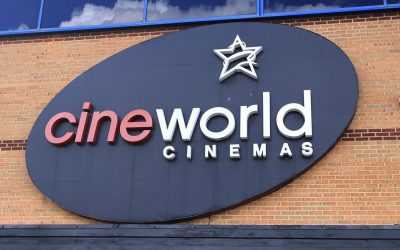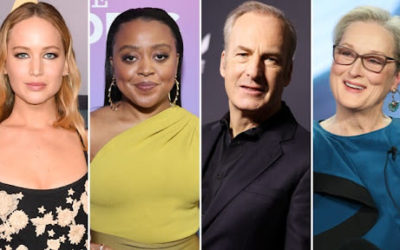Source: Deadline
As is often the case at the weekend box office, the results of the revenue earned over this period of time are something of a mixed bag. On the one hand, the film that held last weekend’s #1 spot, Paramount’s latest horror “Smile”, held surprisingly well with a total of $17.6 million, only a 22% drop compared to the previous weekend and trailing only 2017’s “Get Out” for the best second-weekend hold for an R-rated horror film. On the other hand, some of the newer releases didn’t fare nearly as well as their studios had hoped, with 20th Century Studios’ “Amsterdam” falling well below expectations and only bringing in $6.2 million over the three-day period, likely due to the film’s generally negative reception from critics and audiences. Sony’s family-oriented musical “Lyle, Lyle, Crocodile” also underperformed, but not nearly to the same degree as “Amsterdam”, managing to receive $11.5 million throughout the weekend. As one can see, few of these numbers are anything to write home about, but considering that many of the season’s most highly anticipated films won’t be put into wide release for a few more weeks, these low totals shouldn’t be too surprising.
These numbers, however, reflect the revenue earned by films given wide release; when it comes to arthouse films released in only a small number of theaters (though for many of these films, that number will increase dramatically in the coming weeks), the overall grosses earned, while much smaller compared to more mainstream fare, have the advantage of significantly higher per-theater averages, earning far more with each individual screening than films that are currently more accessible in a larger number of theaters. Of these arthouse releases, there are two in particular that, despite only being shown in an extremely limited number of theaters during the past weekend, have been able to produce exceptional results: Focus Features’ “Tár” and Neon’s “Triangle of Sadness”, each benefitting from overwhelmingly positive critical reception and successful runs at recent international film festivals.
As the more successful of these two arthouse films, even despite being shown in less than half the theaters “Triangle of Sadness” could be seen in, the Todd Fields directed “Tár” received roughly $160,000 from four theaters over the previous weekend – more specifically, $64,000 on Friday, $53,000 on Saturday, and $43,000 on Sunday. That’s around $40,000 per theater (the second highest average of the year, following only “Everything, Everywhere, All at Once”), specifically one of the New York or Los Angeles locations where one could have possibly seen the film. For three of these theaters – Lincoln Square and The Angelika in New York, as well as The Grove in Los Angeles – “Tár” was the most successful film of the weekend, and later this week, the film will debut in thirty additional locations spread across ten different national markets. Considering how well received “Tár” has been so far (it currently has a 97% approval rating from critics and an 80% approval rating from general audiences), with many praising the performance of leading actress Cate Blanchett in particular (one that had won her a Best Actress award at the most recent Venice Film Festival), it’s quite likely that the film will have an even more impressive gross over the next weekend.
Regardless of how the next few weeks play out for “Tár”, its distributor Focus Features will likely be very satisfied with how well the film is doing, with distribution chief Lisa Bunnell noting how significant its weekend grosses at The Grove and Lincoln Square are for the film’s long-term success, as well as the success of adult-oriented cinema in general. “We need to look at those signs as encouraging as bringing those adult audiences into theaters again,” Bunnell notes, while also mentioning how the demographics of the film’s audience had greater age diversity than the studio had anticipated. “It feels like it’s a nice mix of females and males, over 50 and under.”
Opening alongside “Tár” was the winner of the Palme d’Or at this year’s Cannes Film Festival, Ruben Östlund’s “Triangle of Sadness”, being screened in ten theaters over the course of the weekend and receiving a total of $210,074 (averaging out to $21,007 per theater). Of the locations where it could be accessed, Alamo Brooklyn and AMC Burbank brought in the biggest audiences for the Woody Harrelson-starring black comedy, earning around $24,400 and $22,200 respectively. The critical reception of “Triangle of Sadness” may not be quite as strong as that of “Tár” (it currently has a 73% approval rating from critics, though its audience approval is higher at 88%), but that likely won’t matter too much for those eager to see the film. Even Bunnell sees the success of this competing film as a good sign that adult arthouse fare still has a devoted audience. “It’s good news for specialty films when you have two elevated films in the marketplace doing business, and it’s a step in the right direction,” Bunnell claims. “As we go into awards season, each week, you will have specialty films coming and they will all perform at various levels. But the fact that we are getting people to see these films is really important.”
With all that said, perhaps the biggest success story for an independent release this weekend is that of Iconic Events’ “Terrifier 2”, which came in at #10 at the box office with an estimated weekend gross of $825,000 from 886 screens, receiving an average of about $931 per theater. That may be dramatically lower than the per-screen averages of “Tár” and “Triangle of Sadness”, but those films had the advantage of major film festival screenings and backing from revered independent film distributors. “Terrifier 2”, meanwhile, was funded primarily through crowd-funding efforts with very little (if any) support from major filmmaking institutions. Getting this film into theaters at all was likely the most its creators had hoped for, so it being able to break into the top 10 at the box office (making this the first weekend since its premiere that “Top Gun: Maverick”, so far the year’s biggest financial success, has ranked below the Top 10) must surely be a pleasant surprise at least, and another sign that sometimes it’s not necessarily the biggest blockbusters that receive the most devoted followings.




